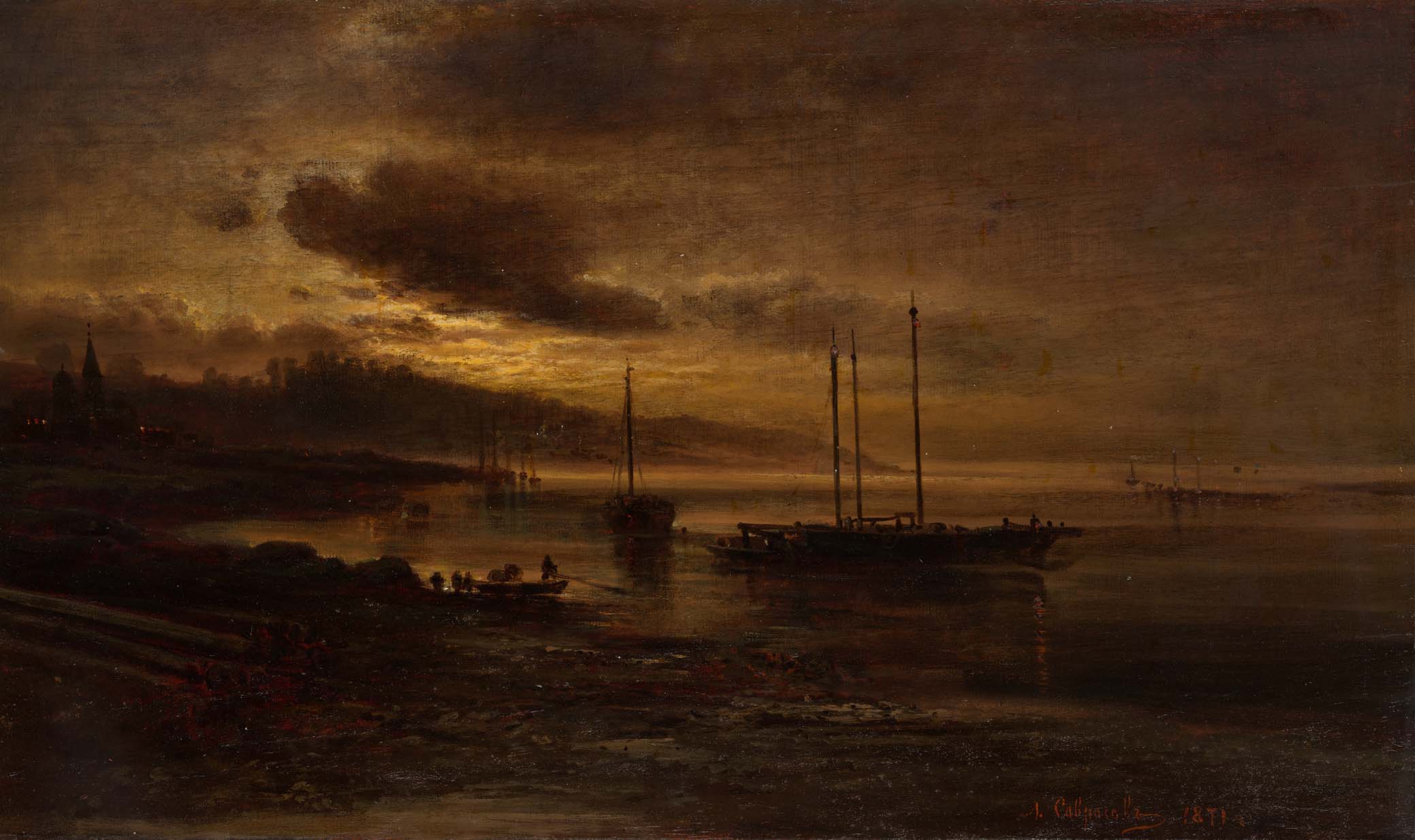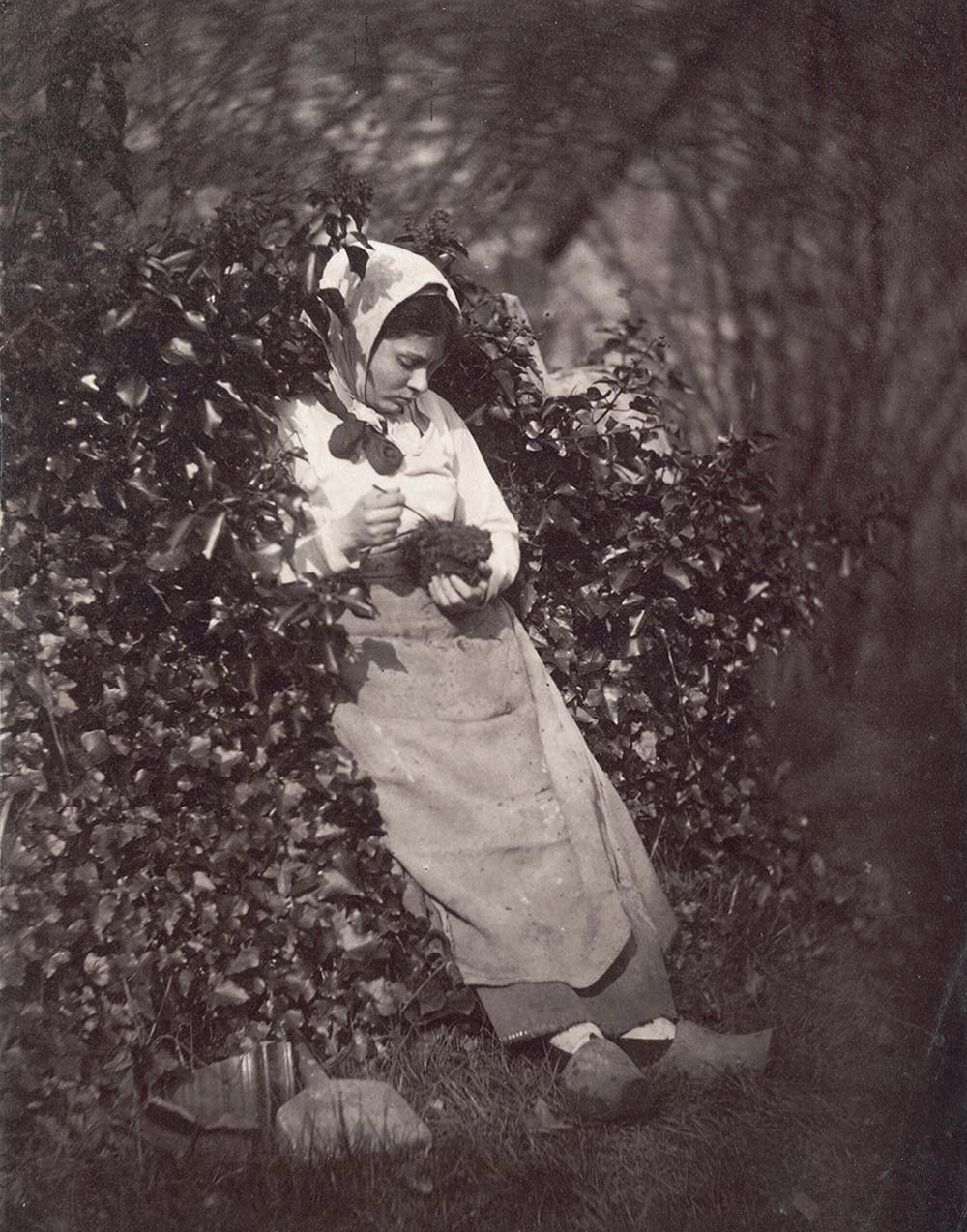
Night Scene on the Volga, by Alexei Kondratievich Savrasov, 1871. The Metropolitan Museum of Art, gift of Humanities Fund Inc., 1972.
While Crime and Punishment (1866) is frequently cited as the “quintessential Russian novel,” Dostoevsky’s final novel, The Brothers Karamazov (1880), is widely acknowledged as his greatest literary achievement. The work shows the author at the height of his powers. This new translation attempts to reveal the soul of his masterpiece, which has exerted a profound influence on many public figures, philosophers, and writers alike. These include Ludwig Wittgenstein and Martin Heidegger, as well as Virginia Woolf, Kurt Vonnegut, Cormac McCarthy, and Haruki Murakami. Sigmund Freud called it “the most magnificent novel ever written” and was fascinated with what he saw as its oedipal themes. In 1928 Freud published a paper entitled “Dostoevsky and Parricide,” in which he presumed to investigate Dostoevsky’s own neuroses. The British writer C.P. Snow described Albert Einstein’s admiration for The Brothers Karamazov: when Einstein first read the novel, he found it to be, Snow recalled, “the supreme summit of all literature. It remained so when I talked to him in 1937, and probably until the end of his life.”
Fyodor Mikhailovich Dostoevsky was born in 1821 at St. Mary’s Hospital for the Moscow poor, where his father served on the staff after a career in the Russian army medical service. The author’s grandfather had been a Uniate priest and the family claimed to have descended from seventeenth-century nobility. Dostoevsky’s mother, in comparison, was the daughter of Moscow merchants.
From 1837 to 1843 the young man attended the Military Engineering School in Petersburg, followed by a brief period of government service. In 1839, while still at school, Dostoevsky learned that his father had been murdered by peasants on the small estate he had recently purchased just south of Moscow. The exact circumstances were unclear, but the event made an enormous impression on the young man and was reflected throughout his later writings.
During his youth, Dostoevsky read widely in Russian and Western literatures. Among Russian writers, he engaged with the works of Karamzin, Pushkin, and Lermontov. He especially admired Gogol, whose intensely imaginative writings emphasized the plight of the downtrodden “little people” of the capital. Among European authors, Dostoevsky absorbed Homer, Shakespeare, the French dramatists, Diderot, Voltaire, Hugo, Zola, Balzac, Goethe, Schiller, and Dickens. In 1844 Dostoevsky resigned his position in government service and decided to try his fortune in the literary world of Petersburg. His first endeavor was a translation of Balzac’s Eugénie Grandet, a novel focused on the entanglements of greed, money, love, obsession, and self-sacrifice.
Dostoevsky’s first original work was an epistolary novel entitled Poor Folk (1846), which depicts an impoverished copy clerk who is hopelessly in love with a young woman whose affection he can never win. The preeminent contemporary Russian critic Vissarion Belinsky was delighted with the work and proclaimed that a “new Gogol” had arrived on the literary scene. Regrettably, Dostoevsky’s second work, published the same year, was much less well received by the critics. The Double, a psychological tale of fantasy, obsession, and madness, was dismissed because the author appeared to have abandoned their preferred social and political themes, which had characterized Poor Folk.
During the 1840s, Dostoevsky had begun attending meetings of the Petrashevsky Circle, a discussion group in Petersburg organized by Mikhail Petrashevsky, a follower of the French utopian socialist Charles Fourier. The members of the circle included writers, teachers, students, minor government officials, and army officers. While differing in their political views, most of them were opponents of the tsarist autocracy and Russian serfdom. At one meeting in 1847, Dostoevsky read aloud Belinsky’s notorious and banned “Letter to Gogol,” in which Gogol was pilloried for giving up progressive social themes in favor of religious conservatism. The meeting was interrupted by the police and the participants arrested. Dostoevsky was interrogated, jailed, and condemned to death. At the appointed hour, he was in a group of convicts led out to a parade ground to be shot; but at the last minute a reprieve arrived and he was spared execution in a gesture epitomizing Tsar Nicholas I’s unexpected granting of clemency, as well as his cruel flair for melodrama.
Dostoevsky’s sentence was commuted to hard labor, and he spent the 1850s under dire conditions in a Siberian prison camp and afterward in exile as an army private. He was permitted to return to Petersburg only some ten years later, during the more enlightened reign of Alexander II.
Upon his return, Dostoevsky wrote and published a prison memoir entitled Notes from the House of the Dead (1860–62), in which he described his own experience as well as the lives of the variety of prisoners he had encountered in Siberia. One year after that, he published his extraordinary Notes from Underground (1863), the first part of which was a spirited polemic against Nikolay Chernyshevsky’s rational egoism and utilitarianism as expressed in the controversial novel What Is to Be Done? The second part of this deeply probing work, an effort to explain how and why the hero has taken refuge in the underground, reveals the full dimensions of the underground man’s character in three distinct novelistic episodes. This remarkable work has been described as a “prologue” to the author’s “five-act tragedy”—that is, as an introduction to Dostoevsky’s five major novels written between 1866 and 1880: Crime and Punishment (1866), The Idiot (1868), Devils (aka Demons or The Possessed, 1872), The Raw Youth (or The Adolescent, 1875), and, his crowning achievement, The Brothers Karamazov (1880).
The 1860s proved to be one of the most troubled times in Russian history. Russia’s ignominious defeat in the Crimean War had exposed the deficiencies of the autocracy; the accession of Alexander II to the throne in 1855 promised significant changes in governance and social organization. His reign is known as “the era of great reforms.” Organs for local self-government (zemstvos) were established to deal with local economic needs; judicial reforms were instituted to promote the speedy and equitable administration of justice; and military reforms were enacted to modernize the Russian army. The most important and best known of Alexander’s “great reforms” was, of course, the long-awaited emancipation of the serfs in 1861 (two years before Lincoln’s Emancipation Proclamation freeing the enslaved people in the United States).

Crime and Punishment is a remarkable product of this unsettled decade; it is also the ultimate Petersburg novel, where the city itself is much more than just an urban background. It is seen as a cradle of Western ideas and influences—such as socialism, atheism, materialism, and other “-isms,” all of which originated in Europe and infected the minds of the protagonist, Raskolnikov, and other so-called liberals in the novel (Svidrigaylov, Luzhin, and Lebezyatnikov). In contrast, with respect to the 1870s, The Brothers Karamazov demonstrates that the pernicious intellectual “disease” had succeeded in penetrating the Russian countryside and was now afflicting the inhabitants of a remote Russian town called Skotoprigonevsk, literally “stockyard,” and, in particular, the members of one “little” family, the Karamazov clan, Fyodor Pavlovich and his three legitimate sons, Dmitry (Mitya), Ivan, and Aleksey (Alyosha).
The novel has been translated numerous times. Translators learn from one another and, in a real sense, literary translation becomes a collaborative enterprise.
Constance Garnett’s classic translation of The Brothers Karamazov (1913) has endured and been a frequent choice of readers for over one hundred years. It has been revised several times and has served as the text in two Norton Critical Editions, revised and edited by Ralph Matlaw (1976) and again by Susan McReynolds (2011). Garnett’s translations of Russian novels were a remarkable achievement for their time. Altogether, she translated more than seventy volumes of Russian literature, many of which are still in print today. Although her Victorian English was admirable, her knowledge of Russian was less than perfect. Moreover, she liberally adapted Dostoevsky’s novels to the aesthetic demands of her English readers. She wrote:
Dostoievsky [sic] is so obscure and so careless as a writer that one can scarcely help clarifying him—sometimes it needs some penetration to see what he is trying to say.
One result of her “clarifications” was the elimination of the narrator’s various mutterings and prevarications, which combine to lend an air of rumor and unspecified intrigue to the narrative and thereby enhance the plot.
The other most popular version of the novel is by the American-Russian team of Richard Pevear and Larissa Volokhonsky, published over twenty years ago, the first of their long series of translations of the Russian classics. Their translation is characterized by a too close adherence to the Russian text that results in a word-for-word and syntax-for-syntax style that sacrifices tone and frequently misconstrues a passage’s overall sense.
Critics have noted that previous translations are often lacking in the specificity of individual speech. They seem to use one common level of English diction and syntax. Dostoevsky’s characters must be seen as unmistakably distinct individuals—not only the main figures (Fyodor, Dmitry, Ivan, and Alyosha) but also the minor ones (Katerina, Grushenka, Lise, and Rakitin). Each character speaks in his or her own Russian idiolect. It is the translator’s job to try to capture their individual speech patterns.
Some of the most poignant and significant passages of The Brothers Karamazov are those in which Dostoevsky’s characters express their deepest religious convictions. Modern literary Russian consists of a splendid combination of the spoken dialect of the Eastern Slavs (so-called Old Russian) and the ancient written language of the Russian Orthodox Church (known as Old Church Slavic or Slavonic). This linguistic blend has, since the time of Pushkin, provided an exceptionally rich source of images and diction for Russian writers. Father Zosima’s life and teachings, described extensively in Book Six, require an appreciation for this aspect of Dostoevsky’s style. The author was very worried that Father Zosima’s life and teachings in Book Six might not be enough to counter the argument of the Grand Inquisitor in Book Five. The reader will have to read the novel and decide the case as they see fit.
Adapted from The Brothers Karamazov, translated by Michael R. Katz. Copyright © 2023 by Michael R Katz. Used with permission of the publisher, Liveright Publishing Corporation, a division of W.W. Norton & Company, Inc. All rights reserved.
